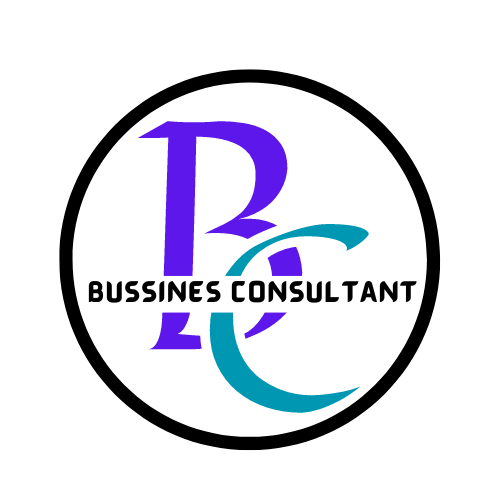Understanding Business Forecasting Techniques!
Business Forecasting
Importance of Forecasting
Business forecasting is the process of predicting future trends and outcomes based on historical data and analysis. It’s crucial for decision-making in every part of a business, from budgeting to resource allocation. A solid forecast helps companies prepare for changes in the market and stay ahead of competitors.
Evolution of Forecasting Techniques
Over the years, forecasting techniques have evolved from simple guesswork to sophisticated models that integrate both quantitative and qualitative data. This evolution has been driven by advancements in technology and a better understanding of statistical methods.
Key Objectives of Forecasting in Business
The primary objectives of forecasting include:
- Minimizing risks and uncertainties in decision-making
- Enhancing resource allocation and operational efficiency
- Improving strategic planning and financial performance

Quantitative Forecasting Techniques
Time Series Analysis
Overview of Time Series Data
Time series data is a sequence of data points collected or recorded at specific time intervals. It’s widely used in business forecasting to analyze past performance to predict future outcomes.
Components of Time Series
Time series data typically consists of:
- Trend: Long-term movement in data
- Seasonality: Regular pattern that repeats over time
- Cyclical: Fluctuations influenced by economic factors
- Irregular: Random or unpredictable events
Methods of Time Series Analysis
Some popular methods include:
- Moving Averages: Simplifies data by averaging over a period
- Exponential Smoothing: Gives more weight to recent observations
- ARIMA: Combines autoregressive and moving average techniques for complex datasets
Regression Analysis
Relationships Between Variables
Regression analysis helps understand relationships among variables, making it possible to predict one variable based on the value of another.
Simple vs. Multiple Regression
- Simple Regression: Involves one independent variable predicting one dependent variable.
- Multiple Regression: Involves two or more independent variables, providing a more comprehensive view of predictive relationships.
Assumptions and Limitations of Regression Analysis
While powerful, regression analysis assumes a linear relationship and may be misleading if assumptions about data distributions are violated.
Moving Averages
Types of Moving Averages
Moving averages smooth out data fluctuations to reveal trends. Common types include:
- Simple Moving Average (SMA): The mean of a specific number of past data points.
- Weighted Moving Average (WMA): Gives different weights to data points, emphasizing more recent observations.
Applications in Business Forecasting
Moving averages are widely used for forecasting sales, revenue, and market trends due to their simplicity and effectiveness.
Pros and Cons of Using Moving Averages
- Pros:
- Easy to calculate and understand
- Good for highlighting trends
- Cons:
- Can lag behind real-time changes
- May not capture sudden shifts in data

Qualitative Forecasting Techniques
Expert Opinion and Judgment
Role of Experts in Forecasting
Experts can provide insight based on their experience and intuition, offering valuable perspectives that data alone may not detect.
Methods for Gathering Expert Opinions
Common methods include interviews, surveys, and panel discussions.
Evaluating Expert Opinions
It’s important to assess the credibility and relevance of the expert’s opinion to ensure it effectively informs the forecasting process.
Market Research and Surveys
Designing Effective Surveys
Creating clear and concise surveys is essential for obtaining accurate data. Questions should be straightforward, avoiding leading or ambiguous phrasing.
Analyzing Survey Data
Once data is collected, analyzing it for patterns can provide insights into customer preferences and market trends.
Incorporating Market Research into Forecasts
Market research findings should be integrated into forecasts to provide a more rounded picture of future trends.
Focus Groups and Interviews
Purpose of Focus Groups
Focus groups gather qualitative data through discussions, allowing businesses to dive deeper into consumer attitudes and motivations.
Conducting and Analyzing Focus Group Sessions
Early preparation, skilled moderation, and careful analysis of discussions can yield rich qualitative insights that enhance forecasting.
Impact of Qualitative Insights on Forecasting
Qualitative insights can provide context to quantitative data, enriching the forecasting process and leading to better decision-making.
Mixed Methods in Forecasting
Combining Qualitative and Quantitative Techniques
Benefits of a Mixed-Methods Approach
Using both qualitative and quantitative data provides a more comprehensive view and can yield more accurate forecasts.
Examples of Successful Integration
Businesses that successfully combined both methods often found significant benefits, including improved product development and better customer engagement.
Challenges in Implementing Mixed Methods
While beneficial, mixed methods can be complex to execute and require careful planning to balance and interpret both types of data.
Scenario Planning
Developing Scenarios for Business Planning
Scenario planning involves creating different hypothetical scenarios to explore potential future environments and make informed decisions today.
How to Use Scenarios in Forecasting
Scenarios can guide strategy and identify risks, allowing businesses to prepare for various possible futures.
Evaluating the Effectiveness of Scenario Planning
Peace of mind can be gained by assessing how well prepared a company is for different potential outcomes by regularly revisiting and revising scenarios.
Delphi Method
Overview of the Delphi Technique
The Delphi Method gathers feedback from a panel of experts in multiple rounds until a consensus is reached.
Steps in the Delphi Process
The process includes selecting experts, conducting surveys, and summarizing findings for further rounds.
Strengths and Limitations of the Delphi Method
While it leverages expert insight effectively, the method can be time-consuming and may suffer from groupthink if not well managed.
Applications of Business Forecasting Techniques
Financial Forecasting
Importance of Accurate Financial Projections
Accurate financial forecasts are crucial for strategic planning, helping businesses understand potential revenues, costs, and profitability.
Techniques Used in Financial Forecasting
Common techniques include cash flow analysis, break-even analysis, and financial modeling.
Case Studies of Financial Forecasting
There are numerous case studies where businesses have successfully utilized financial forecasting to navigate economic downturns or capitalize on growth opportunities.
Demand Forecasting
Understanding Customer Demand
Demand forecasting is about predicting the future demand for products or services, a critical aspect of maintaining efficient operations.
Techniques for Demand Forecasting
Methods like historical sales analysis, market trend analysis, and customer behavior insights can provide valuable forecasts.
Impact of Demand Forecasting on Inventory Management
Effective demand forecasting results in improved inventory management, reducing overstock or stockouts and enhancing customer satisfaction.
Strategic Planning and Resource Allocation
Integrating Forecasts into Strategic Planning
Integrating insightful forecasts into strategic planning can align resources with anticipated market needs.
Resource Allocation Based on Forecasting
Decision-makers can allocate resources more efficiently to meet predicted demands, ultimately driving profitability.
Real-World Examples of Effective Resource Allocation
Many companies have seen tremendous success after strategically aligning their resources based on robust forecasting insight.
Conclusion
Recap of Forecasting Techniques
Forecasting techniques, both quantitative and qualitative, form the backbone of strategic business decision-making.
Importance of Accurate Forecasting in Business
Accurate forecasting enables businesses to navigate uncertainties and anticipate changes in the market.
Future Trends in Business Forecasting
Looking ahead, advancements in AI and data analytics will likely continue transforming forecasting methodologies, making them even more precise and effective.
The best technique depends on your business type, data availability, and specific forecasting needs. It may involve a combination of methods for optimal results.
Improving forecast accuracy can involve access to updated data, a mix of qualitative and quantitative methods, and regular reviews of your forecasting processes to adapt to changing conditions.
There are numerous tools available, such as Microsoft Excel, Tableau, and specialized forecasting software like SAP and IBM Planning Analytics.
Typically, businesses should review and update their forecasts quarterly or bi-annually, or as market conditions change significantly.
Yes, qualitative methods can be just as effective, mainly when used in conjunction with quantitative methods to provide context and deeper insights.




